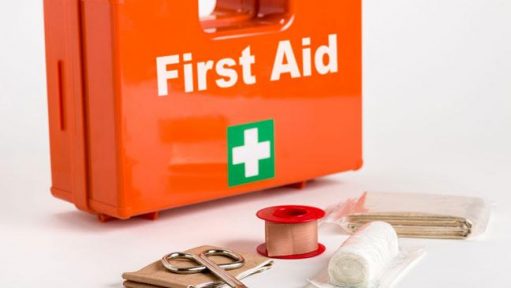HEALTH BLOGS BY FITBYNET
First-aid tips for cuts, scrapes and wounds
First-aid For Cuts (Minor) and Bleeding
Here is a step by step guide to take care of cuts/scrapes/bleeding
– In most cases, bleeding due to minor cuts and scrapes usually stop on its own. However, if the bleeding fails to stop, then gently apply pressure on the wound to stop bleeding. Use a clean cloth/hand or bandage to apply the pressure. You can even elevate the area if the wound is in the leg or hand which can also help to reduce bleeding.
– Wash the area with clean water and mild soap as it can lower the risk of infection. Do this till you feel the bleeding has stopped. Once you wash the area, make sure you dry the area properly with a clean, dry cloth. This is because, an excess of moisture around the cut or wound can lead to pus formation, which in turn can impair the healing process.
– Remove dirt and debris, if any, around the wound. Avoid using hydrogen peroxide or iodine as it might irritate the skin. Use tweezers or forceps (a clean one, preferably with an antiseptic solution) to remove dirt or any visible particles around the wound. Do not try to remove wounded skin as it might further lead to bleeding and increase the risk of infection. Do consult a doctor if you find it difficult to clean the wound.
– Apply antibiotic or antiseptic ointment to the wound/cut as it can not only lower the risk of infection but also keep the surface a bit moist, which in turn can prevent scarring. Use of antiseptic cream on the wound can help to relieve irritation and burning sensation. Apply just a thin layer and not laden the cut with ointment. Also, if you experience any rash or redness around the cut or feel itching after the application of the ointment, then stop using it. It could be a sign of an allergic reaction.
– Use a clean bandage or wire gauze to cover the wound. You can even tie a neat cotton cloth around the cut or wound. Covering the wound can not only keep the wound clean but also prevent the entry of air or moisture which can delay the process of healing. Moreover, it can also lower the risk of infections as an open wound/cut acts as a breeding ground for microbes. If you have a deep cut, then you might need to change the dressing quite often than not. If the bandage becomes wet or dirty, then it a sign to change the bandage.
– Get a tetanus shot if you haven’t got one in the last five years. This is because, cuts due to a rusty blade or knife can increase the risk of tetanus, which is a serious bacterial infection that can cause painful muscle spasms. So if you have a deep cut or cut due to a rusty instrument, then getting a tetanus injection can help you to lower the risk and protect you from tetanus.
Some BASIC FAQ’s:
How do I treat a minor cut or scrape?
Follow these steps to keep cuts clean and prevent infections and scars.
- Wash your hands. First, wash up with soap and water so you don’t get bacteria into the cut and cause an infection. If you’re on the go, use hand sanitizer.
- Stop the bleeding. Put pressure on the cut with a gauze pad or clean cloth. Keep the pressure on for a few minutes.
- Clean the wound. Once you’ve stopped the bleeding, rinse the cut under cool running water or use a saline wound wash. Clean the area around the wound with soap and a wet washcloth. Don’t get soap in the cut, because it can irritate the skin. And don’t use hydrogen peroxide or iodine, which could irritate the cut.
- Remove any dirt or debris. Use a pair of tweezers cleaned with alcohol to gently pick out any dirt, gravel, glass, or other material in the cut.
Do I need to bandage a cut or scrape?
You don’t need to bandage every cut and scrape. Some heal more quickly when left uncovered to stay dry. But if the cut is on a part of the body that might get dirty or rub against clothes, put on a bandage to protect it. Change the bandage every day or whenever it gets wet or dirty.
How long should a cut or scrape be covered?
Once a solid scab has formed, you can take off the bandage.
How do I prevent scars?
When your body heals after a cut, scrape, or burn, sometimes a scar can be left behind. Depending on the injury, some scars are small, and others are bigger and more noticeable.
To prevent scars, follow these tips:
- Wear helmets, kneepads, and other protective gear to avoid injury.
- Treat any cuts or other wounds right away.
- Keep the wound moist (try an antibiotic ointment or petroleum jelly) while it heals.
- Don’t pick at the scab.
- Consider covering your cut with silicone gel sheeting, a clear, sticky pad that can speed healing.
- If the scar isn’t fading, ask your doctor about creams or ointments to make it less obvious.

